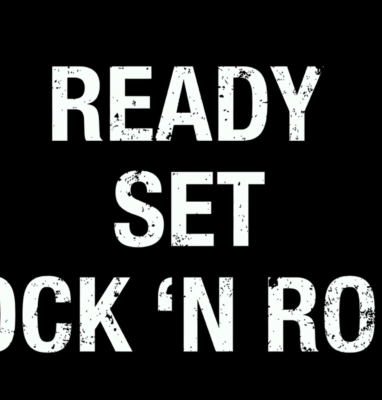Producing the World’s First Live Stream
Last updated: 14 August 2022

Groningen Rock City
With an average age below 35, the university city Groningen is one of the youngest cities in Europe. Of the 180.000 people back in the nineties, almost 80.000 were students. No closing hours made for a healthy rock scene. Almost every night, students played in bands in many of the hundreds of bars. The audience: other students. Groningen was -and still is- a vibrant city.
Rock temples
There weren’t that many jobs back in the early nineties, so students – and those who dropped out of college – found voluntary jobs in one of the rock temples in Groningen. This is where the coolest bands played: grunge, rock, punk, surf, beat, hip hop, dance, ska, funk, metal, you name it: it was there. Vera and Simplon were the places to go, to see cool local and international bands. Some of these international bands became quite famous, like Green Day and Nirvana.
Creative scene
The rock scene in Groningen attracted other young people. Concerts had to be filmed. Posters needed to be designed. A creative scene of designers, photographers, light jockeys, film makers and artists joined in and mixed with the rock culture. People between 17 and 25 were in charge of bookings, stage lights, sound, filming, promotion and designs: everything you need to promote bands, let bands play, and let the audience (themselves) have a great time.
Do it yourself community
The people in the scene were quite poor. Playing with your band could mean free beer. Filming on stage could get you in a concert for free. People were in the scene to be part of something bigger, to learn and to create. And of course to drink beer, flirt with girls or guys, watch cool bands and do cool new stuff yourself. Because there was no budget, you had to be creative. And you had to convince other people to help you. The scene embraced the Do It Yourself mentality of the punks and mixed it with the community idea of the hippies.
Digital stuff
In the early nineties the creative scene from Groningen started to work with computers. Computers had been gear for nerds so far, but now they offered tools to do graphic design and music composition. They wanted to create great underground rock and roll designs, but with the automation of the computer. Exactly the opposite of the boring clean DTP design styles of that era.
Digital video
With the limited resources available, they managed to buy a Mac computer with a video grabber card in 1993. And that changed a lot. They could now capture and digitise the analog video feed from the video crew who filmed the concerts.
A modem
In 1993 they also bought a modem. Because they had heard about this internet thing. Web pages were typically text only. And then came Netscape. The kids built their first – graphically designed – website. They started to upload audio fragments and video clips of concerts. Took them an hour to upload, but who cares. Rock and roll. Okay, the phone bill was a problem.
Gerad and Rudo and Stef
1994. It must have been one of those many nights where they sat at the bar in Simplon, drinking beer and you know, having fun. Great stories. Cool music. And always full of crazy ideas. Gerad, Rudo and Stef. And a bunch of other drunk people. Gerad basically lived in Simplon. Gerad was a gifted film maker. A rockabilly. He was so passionate, Stef learned a lot from him. Rudo really knew a lot about computers. Even unix stuff. Wow. Stef always had the craziest ideas, and loved marketing and tech.
Let’s broadcast live!
They were talking about all that internet stuff at the bar. About the opportunities. And what our next big plan should be. One of them shouted: “WHAT IF WE COULD BROADCAST A CONCERT LIVE ON THE WEB?!” Everybody started laughing. ‘Come on guys, you’re pushing too far, nobody has internet anyway!’ They laughed too and drank more beer. But it also made them more determined to try it. Who cares if it didn’t work. It will be fun. Rock and roll.
Upstairs bar
They had prepared some scripts but had tested nothing. This evening was just a test. Just do it. It was a Friday night, November 4 1994. They moved the Mac computer to the Upstairs Bar, which has a small stage, typically used for local bands to play for their friends and family and a small audience on a Friday night. They taped a phone line to the ceiling, from the office to the kitchen next to the stage. The band rehearsed. And then the band started to play. Really loud.
First step: grabbing frames
Okay, getting technical here. A video feed went from the video crew’s analog Panasonic video mixer into the Apple Mac Performa 630’s video grabber card. It captured really small JPG files, like 200×150 pixels or so – to the hard drive. A local script repeatedly uploaded the latest JPG as fast as it could through our modem to a web server, using FTP.
The server
The web server was important: it was running the latest Netscape server software, which introduced a new feature called HTTP Keep Alive. Before, each request for a HTML page, or an image, required the browser to open a new connection, request the object, and then close the connection. For the second object, the entire process repeated. Open, request, close. Open, request, close. Terribly slow. But now, a browser could keep the connection open and request all required objects, which was much faster.
CGI script
Instead of embedding a JPG, they put a CGI script in the <IMG> tag. This server script told the browser to constantly refresh just the image, as fast as it could. Load, reload, load, reload. Without needing to refresh the entire page. It was later called server-push-jpg, the technology became popular with webcams. Basically the kids turned Netscape into a native HTML video player.
Netscape 1.12b
The first browser to implement HTTP keep alive technology was Netscape 1.12 beta for Mac. Windows 3.1x users still had to refresh the web page manually to see a new image. (Yes, that’s right, Windows 95 was not out yet). But on the Macs, they saw magic: a live stream of images.
It’s alive!
They saw live images, auto refreshing inline. Just 200×150 pixels. One or maybe even 2 frames per second if you were lucky. Nowadays it would be called http frame rate adaptive live streaming. They had no audio. Which is quite important if you want to broadcast a concert. And they had just 4 viewers. These were people they knew, who stayed at home to watch, instead of drinking beer with them at the concert. It was a stream of images. Which is basically what video is. And it was live. Magic.
Breakthrough
To them this was a breakthrough. Yes, technically it sucked. But! They were one of the first mortal souls to broadcast live video on the World Wide Web.
In the nineties, live broadcasting across the globe was something that was restricted to very rich companies with extremely expensive satellite connections.
And here they were. Three punks sitting in a kitchen, behind a computer with a modem, drinking beer and smoking cigarettes, broadcasting live, protecting their ears against the extremely loud noise of the band playing next to us. Who was the band? They did not know. They were focussed on the live stream.
Stef realised how this would change the world. Anyone could broadcast. The technology would improve. This would rock the broadcasting industry. He wanted to be part of that revolution. He founded Jet-Stream.
Pioneering
All they had seen before was a static live image of a coffee pot in 1993. They made a live stream of images in 1994. It wasn’t until 1995 before RealNetworks introduced RealAudio, and RealVideo was introduced in 1997. Stef launched Jet-Stream.com in 2003. YouTube launched in 2005: 11 years after our first live stream.
Today, we can’t imagine life without (live) streaming: YouTube, Facebook, Instagram, FaceTime and Netflix for instance. Watching video on the web is unavoidable these days. There are now more subscriptions to streaming services than to digital television. Today we sleep, we work and watch streams. And these kids happened to plant that small seed in 1994. Wow.
All kudos to Gerad and Rudo and the people from Simplon. This was a team effort.
Ready Set Rock ‘n Roll documentary
In 2019, an award-winning, 22 minute documentary was made by filmmakers Alex Pitstra and Koen de Koning about how live streaming was invented in 1994 by some kids, and how they started producing livestreams for some of the most important European music festivals. Enjoy ‘Ready Set Rock ‘n Roll’!




